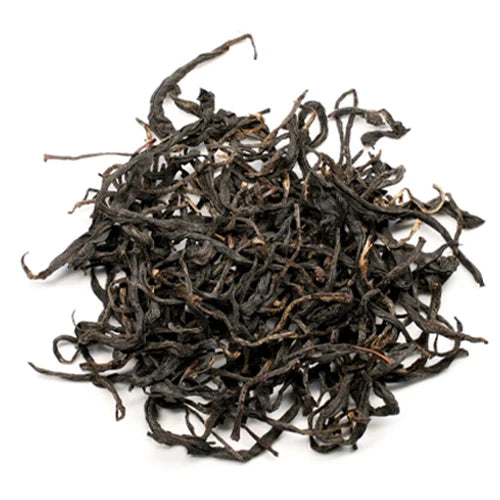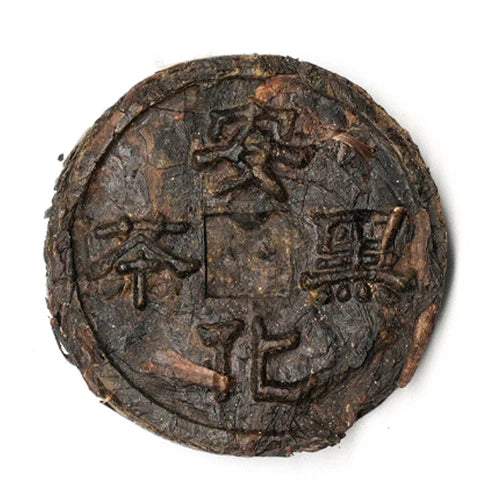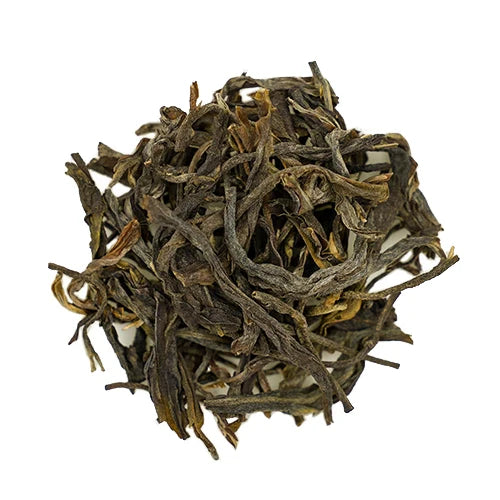Китайский чай подразделяется на четыре типа в зависимости от сезона сбора: весенний чай, летний чай, осенний чай и зимний чай. Климатические характеристики и среда выращивания каждого сезона существенно влияют на качество, вкус и питательные компоненты чая. Ниже приведено введение в чаи каждого сезона:
1. Весенний чай
- Время сбора : с середины марта по май.
- Характеристики :
Лучшее качество : После зимнего покоя чайные деревья накапливают богатые питательные вещества, благодаря чему весенний чай отличается высочайшим качеством.
Свежий вкус : обладает насыщенным ароматом, нежным вкусом и выраженной сладостью.
Пищевая ценность : высокое содержание теанина, аминокислот и витаминов.
- Виды чая : популярные сорта включают зеленый чай, белый чай и некоторые улуны (например, Тегуаньинь, Уишань), желтый чай и весенний сырой пуэр.
- Представители : Западноозёрный Лунцзин , Билуочунь, Белый чай Аньцзи, Цинсян Тегуаньинь (весенний чай), Бай Мудань.
2. Летний чай
- Время сбора : июнь-август
- Характеристики :
Быстрый рост : высокие температуры ускоряют рост чайных деревьев, в результате чего листья становятся крупнее.
Более мягкий аромат : По сравнению с весенним чаем, летний чай имеет более легкий аромат, но более сильный, слегка горьковатый вкус.
- Типы чая : Ценится для приготовления черного чая и некоторых зеленых чаев с крепким вкусом, а также выдержанного пуэра. Летний чай также используется для создания основ жасминового чая.
- Представители : Черный чай Кимун, Цзиньцзюньмей, Байхао Иньчжэнь (летний чай), спелый пуэр .
3. Осенний чай
- Время сбора : сентябрь-октябрь
- Характеристики :
Повышенный аромат : осенний чай, как правило, имеет выраженный аромат, хотя по вкусу он может немного уступать весеннему чаю.
Мягкий вкус : обладает освежающими свойствами и богатым, длительным послевкусием.
- Типы чая : Обычно включают улуны и черные чаи, особенно полуферментированные сорта, такие как чай Тегуаньинь и Уишань.
- Представители : Тегуаньинь (осенний чай), Дахунпао, Фэнхуан Даньцун .
4. Зимний чай
- Время сбора : с ноября по январь следующего года.
- Характеристики :
Низкая урожайность : Низкие температуры замедляют рост чайного дерева, что приводит к снижению урожайности чайных листьев.
Нежный вкус : зимний чай обладает тонким ароматом и мягким вкусом с легкой сладостью и высокой свежестью.
- Виды чая : в основном произрастают в южных регионах выращивания улуна, особенно известен зимний улун Тайваня.
- Представители : Тайваньский высокогорный улун, Дундин улун.

Различия в зеленом чае: первая весна, до Цинмина, до Гуюй
Зеленый чай в основном пьют весной, и в зависимости от времени сбора его можно разделить на чай первой весны, чай до Цинмина и чай до Гуюй.
1. Первый весенний чай
- Концепция : Относится к первой партии чая в году, также известной как «чай ранней весны». Сбор обычно происходит с конца марта по начало апреля.
- Характеристики :
Высокая свежесть : Чайные деревья накапливают питательные вещества зимой, в результате чего листья становятся нежными и свежими.
Сильный аромат : обладает насыщенным, стойким ароматом и освежающим вкусом.
Питательный : богат теанином, аминокислотами и другими необходимыми питательными веществами.
Цена : Из-за низкого производства и высокого качества, как правило, имеет более высокую цену.
2. Перед чаепитием Цинмин
- Концепция : Специально собранный перед праздником Цинмин (4 или 5 апреля). Часто входит в состав Первого весеннего чая.
- Характеристики :
Высочайшее качество : более низкие температуры приводят к более медленному росту, в результате чего образуются нежные, пухлые шишки, обладающие свежим вкусом.
Свежий аромат : освежающий аромат с мягким и сладким вкусом.
Дефицит : Ограниченное производство и трудоемкий сбор урожая приводят к более высоким ценам.
Коллекционная ценность : Считается превосходным зеленым чаем с потенциальными коллекционными качествами.
3. Перед чаем Гую
- Концепция : Чай, собранный перед праздником Гуюй (19 или 20 апреля), после праздника Цинмин.
- Характеристики :
Сбалансированный вкус : по сравнению с чаем «До Цинмина» этот чай более зрелый, с насыщенным вкусом, хотя его аромат может быть менее интенсивным.
Более высокая урожайность : при более длительном периоде роста производство выше, что приводит к более доступным ценам.
Daily Drink : качество остается на высоком уровне, подходит тем, кто ищет и качество, и ценность.

Сезонные различия в различных видах чая
Каждый вид чая — черный, зеленый, улун, пуэр и белый — имеет уникальные характеристики в зависимости от сезона.
Разные сезонные черные чаи
- Сезоны сбора : весна, лето, осень
- Сезонные изменения :
Весенний черный чай : высочайшего качества с насыщенным, свежим вкусом и цветочными или фруктовыми нотками.
Летний черный чай : более крепкий вкус, но более мягкий аромат, используется для сортов с ярким вкусом, таких как Цзиньцзюньмэй.
Осенний черный чай : более выраженный аромат и мягкий вкус, немного слаще.
Разные сезонные улуны
- Сезоны сбора : весна, лето, осень
- Сезонные изменения :
Весенний улун : Высочайшее качество с насыщенным ароматом и крепким вкусом.
Летний улун : менее распространён, используется для улунов с крепким вкусом.
Осенний улун : сильный аромат и насыщенный вкус, известен такими сортами, как Тегуаньинь .
Разные сезонные чаи пуэр
- Сезоны сбора : весна, лето, осень (как сырые, так и спелые).
- Сезонные изменения :
Весенний сырой пуэр : нежные листья со свежим ароматом и цветочными нотками.
Летний сырой пуэр : более тяжелый вкус с меньшим ароматом, часто используется для ежедневного употребления.
Осенний сырой пуэр : сладкий и мягкий, хорошо выдерживается.
Зрелый пуэр : качество обычно лучше весной и осенью, вкус мягкий, зрелый.
Различные сезонные зеленые чаи
- Сезоны сбора : весна, лето
- Сезонные изменения :
Весенний зеленый чай : нежные почки с насыщенным вкусом; ценится по высокой цене.
Летний зеленый чай : более крепкий и слегка горьковатый, с крепкими листьями, часто более доступный по цене.
Различные сезонные белые чаи
- Сезоны сбора : весна, осень
- Сезонные изменения :
Весенний белый чай : лучшего качества с нежными листьями и насыщенным ароматом.
Осенний белый чай : мягкий и ароматный, с хорошим потенциалом выдержки.

Заключение и рекомендации
| Тип чая | Основные сезоны сбора урожая | Сезонные характеристики |
|---|---|---|
| Черный чай | Весна, Лето, Осень | Весенний чай имеет насыщенный аромат, свежий и сладкий; летний чай имеет крепкий вкус, но слегка слабый аромат; осенний чай имеет насыщенный аромат, мягкий и округлый. |
| Чай улун | Весна, Лето, Осень | Весенний чай отличается высоким качеством и насыщенным ароматом; летний чай отличается крепким вкусом; осенний чай отличается высокой ароматностью и мягким вкусом. |
| Чай Пуэр | Весна, Лето, Осень | Весенний чай свежий и освежающий, с выраженным цветочным и фруктовым ароматом; летний чай немного легче по аромату и сильнее по вкусу; осенний чай сладкий и нежный, а спелый чай имеет устойчивый вкус. |
| Зеленый чай | Весна, Лето | Весенние чайные почки и листья нежные, с сильным ароматом и свежим вкусом; летние чайные листья густые и крепкие, с тяжелым вкусом и горечью. |
| Белый чай | Весна, Осень | Почки и листья весеннего чая нежные, аромат тихий, вкус сладкий, со свежестью весны; осенний чай имеет более глубокий аромат и мягкий вкус со зрелым привкусом осени. |
Рекомендации по выбору :
- Для свежего и ароматного вкуса : выбирайте весенние чаи всех видов, такие как черный, зеленый, улун и сырой пуэр.
- Для более насыщенного вкуса : выбирайте летние черные и белые чаи, а также улуны.
- Для насыщенного и мягкого вкуса : идеально подходят осенние чаи, особенно улуны и сырой пуэр.
- Для согревания : выдержанный пуэр отлично подходит для осеннего и зимнего сезонов.
Откройте для себя уникальные вкусы каждого сезона и найдите свою идеальную чашку чая!











































































